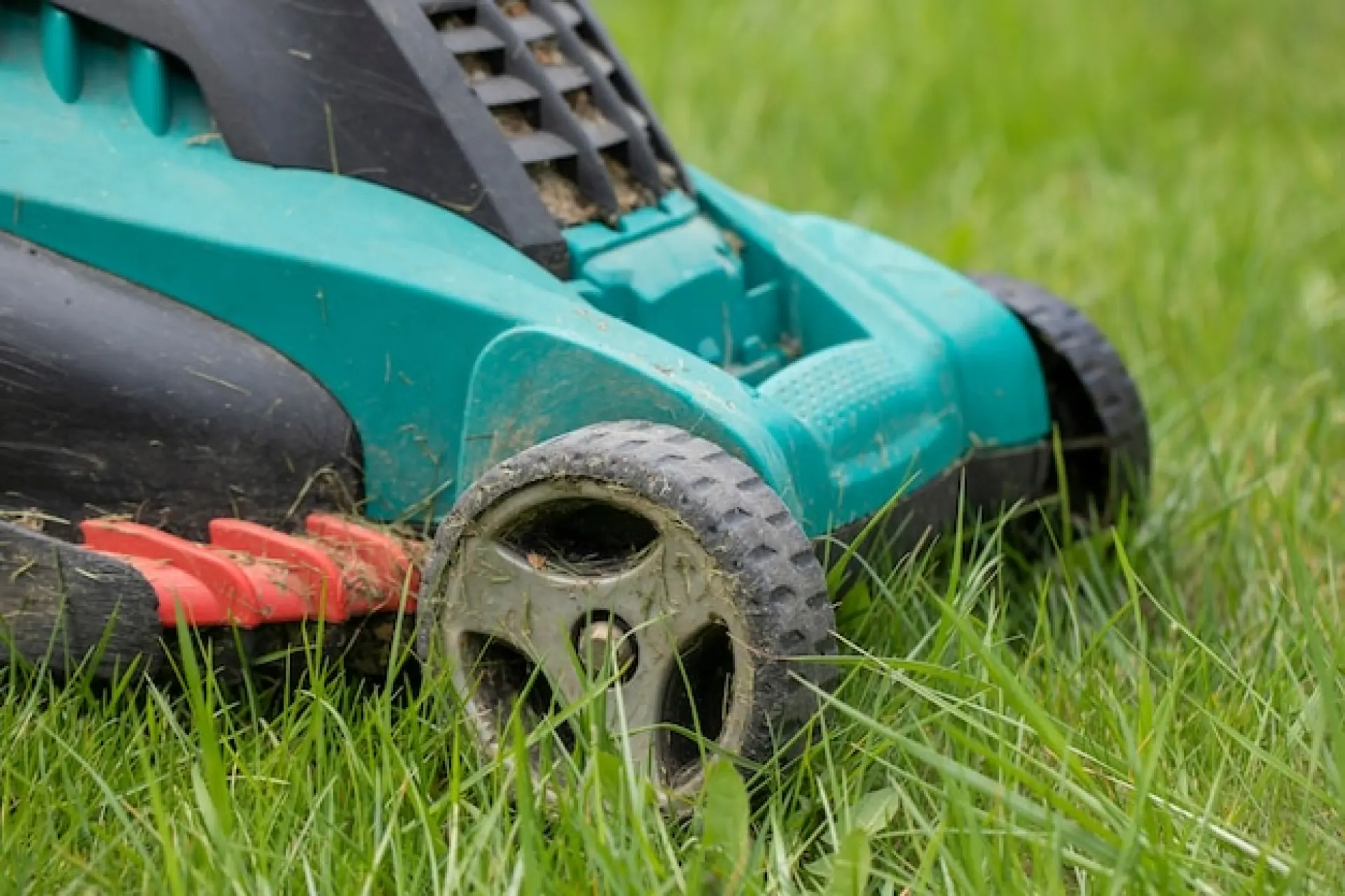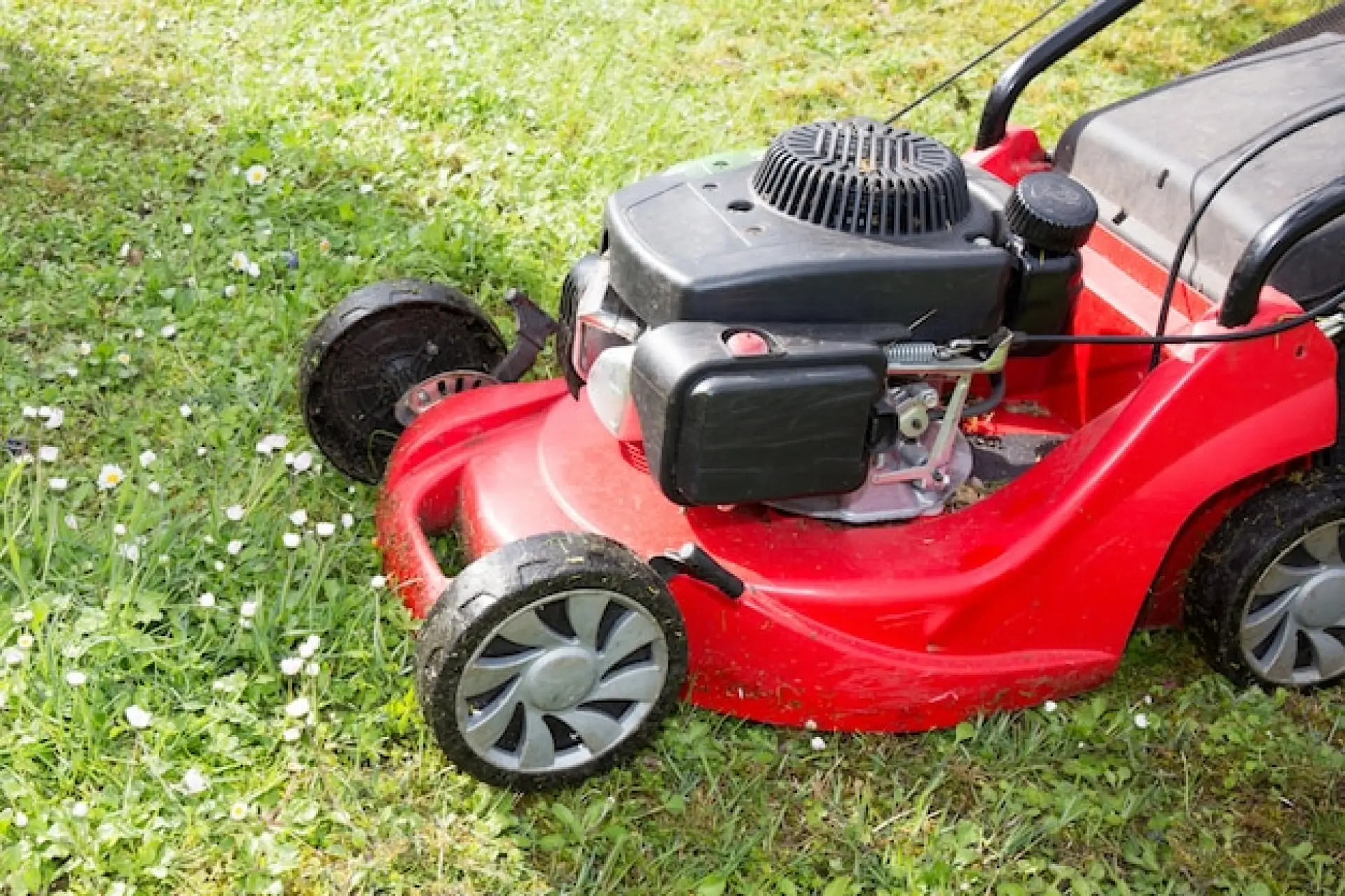Discover how to properly store your lawnmower in winter! Our guide covers everything from the right storage location to engine maintenance before storage for long life.
Choosing the Right Storage Location
Choosing the right storage location for your lawnmower helps protect it from damage and ensures it remains in good condition. A dry, sheltered space such as a garden shed or garage is ideal to prevent rust and deterioration. Ensure the area is well-ventilated to avoid moisture buildup, which can cause metal parts to corrode.
If storing the mower outdoors is the only option, use a waterproof cover to shield it from rain and extreme temperatures. Keep it elevated off the ground to prevent contact with damp surfaces.
Avoid placing it near chemicals or fertilisers, as fumes can contribute to component wear. A proper storage location extends the mower’s lifespan and keeps it ready for use when needed.
Preparing Your Lawnmower for Storage
Before storing your lawnmower, thoroughly clean it to remove grass clippings, dirt, and debris. These materials can trap moisture and cause rust or block essential components.
Use a brush or compressed air to clear any build-up from the undercarriage and blades. Check for loose or worn-out parts, tightening or replacing them as necessary. Ensure the handles and wheels are in good condition.
If your mower has a collection bag, empty and clean it to prevent mould or unpleasant odours. Lubricate moving parts such as cables and wheel axles to prevent stiffness. For petrol mowers, inspect the spark plug and replace it if needed. A well-prepared mower is less likely to develop faults during storage.

Additionally, taking the time to sharpen the mower blades before storage can be beneficial for its long-term performance.
Dull blades tear rather than cut grass, leading to an uneven finish and potential damage to your lawn. Using a file or a grinder to sharpen the edges ensures a clean cut once the mower is back in use.
Also, consider checking the belt system, if applicable, for signs of wear and tear. A cracked or loose belt can reduce efficiency and may snap during operation.
For those with self-propelled mowers, checking the drive system and ensuring the cables and pulleys are clean and functioning properly will help avoid issues when it’s time to mow again.
Taking these extra precautions ensures that when mowing season returns, your machine will be ready for use without unexpected delays.
Draining or Stabilising Fuel
Petrol left in a lawnmower for an extended period can degrade, leading to starting issues and clogged fuel lines. To prevent this, either drain the fuel or use a stabiliser. Draining the fuel is a good option for long-term storage. Run the mower until the tank is empty or use a siphon to remove excess fuel safely. Always dispose of petrol in accordance with local regulations.
Alternatively, adding a fuel stabiliser helps maintain the quality of petrol. This method is ideal for shorter storage periods. Simply mix the stabiliser with the remaining fuel and run the engine for a few minutes to circulate it. Taking these steps prevents fuel-related problems when restarting your mower.
Oil and Engine Maintenance Before Storage
Oil changes are essential before storing your lawnmower to protect the engine from damage. Used oil contains contaminants that can cause corrosion if left sitting over time.
Drain the old oil and replace it with fresh, manufacturer-recommended oil. Inspect the air filter and clean or replace it to maintain engine performance. A clogged filter can reduce airflow, affecting efficiency. Check for any leaks around the engine and tighten bolts if necessary. If your mower has a pull cord, inspect it for fraying and replace it if needed. Performing basic maintenance before storage ensures a smooth start when the mowing season returns.

Beyond oil changes, ensuring your engine remains in optimal condition during storage involves additional steps.
Cleaning the cooling fins and removing any accumulated dirt or debris from around the engine prevents overheating when the mower is next used. If your lawnmower has a fuel filter, check it for signs of clogging or damage and replace it if needed.
Additionally, consider using an engine fogging spray, which coats the internal engine parts with a protective layer that prevents rust during storage.
If your mower features a carburettor, running it dry or using a carburettor cleaner can help prevent blockages and ensure smooth operation when restarting.
These extra maintenance steps ensure your lawnmower remains in excellent condition, reducing the likelihood of costly repairs or performance issues in the future.
Battery Care for Electric and Cordless Lawnmowers
For electric and cordless lawnmowers, proper battery care is essential to maintain performance. Before storage, fully charge the battery, then remove it from the mower if possible. Storing the battery separately in a cool, dry place prevents damage caused by extreme temperatures. Avoid leaving lithium-ion batteries completely discharged, as this can shorten their lifespan.
Check the manufacturer’s recommendations for long-term storage voltage. If using a lead-acid battery, periodically recharge it to prevent it from losing charge completely. Clean the battery terminals to remove dirt or corrosion, ensuring a reliable connection when reinstalled. By following these steps, your battery-powered mower will remain in good condition and ready for use.
Our garden machinery services are here to help you maintain your garden.
Are you looking for ride-on lawnmowers for sale in Northampton? Get in touch today! We are the premium provider of lawnmowers and ride on mowers in Northamptonshire.

